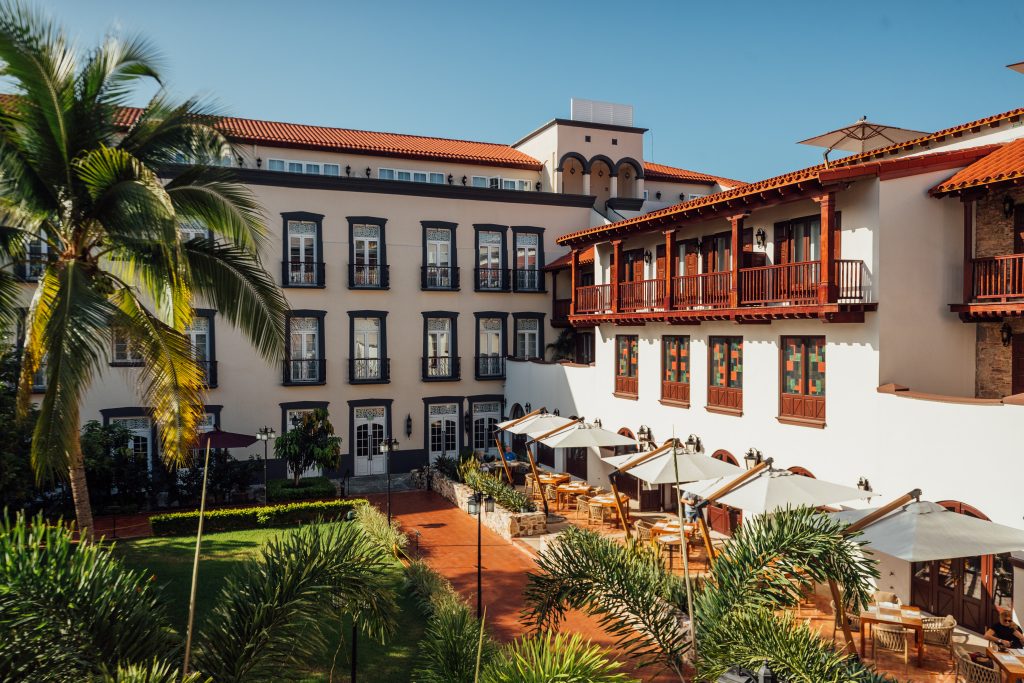American Trade Hotel, Panama
Ace Hotel’s creative team joins forces with Commune and local developers for a restoration project in the country’s oldest neighborhood


Panama City is a place of contrasts and connections. Glass towers jut out of the city’s peripheral coastline, the thick Central American jungle on one side and a burgeoning cosmopolitan metropolis on the other. The development of new housing and retail space can’t seem to keep up with the supply of labor and materials. Everything is under construction, yet the pace of life isn’t rushed. The old meets the new in stark contrast. As some flock to these glass and steel castles in the sky, others look to the past. Panama City’s oldest neighborhood, Casco Viejo, is the center of the country’s art, design and cultural resurgence. The newest (and most impressive) instance of restoration and combination of past and present influences is the American Trade Hotel, a joint creative project between Ace Hotel‘s in-house creative team Atelier Ace, LA’s Commune Design and local development agency Conservatorio.
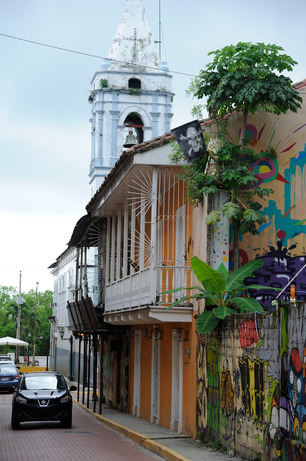

Following up on Ace’s recent first international offering with their impressive Shoreditch location in East London and after the sudden and saddening passing of the brand’s influential founder Alex Calderwood, expectations for the American Trade ran high. One step inside the sunlit historical yet contemporary lobby of the restored early 20th century office and retail space and it’s clear: Calderwood’s legacy and the ability of the Ace team to collaborate and instill its creative magic into all manner of spaces is strong. Before examining the ins and outs of the hotel’s design, it’s essential to understand the context in which it exists.
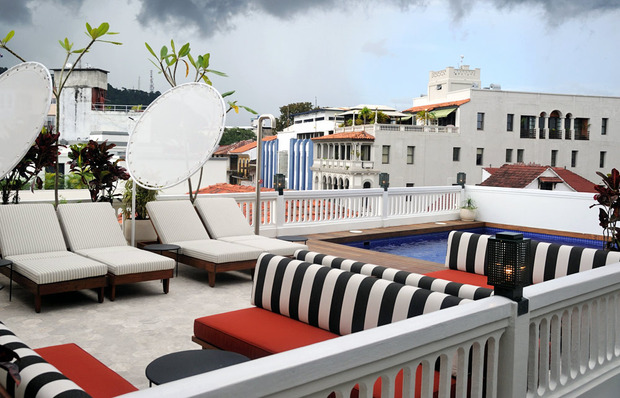
The American Trade Hotel gets its name quite literally: It once housed retail outlets as well as the national headquarters for various American and foreign companies. An old RCA logo is still laid into the tiles in one of the service hallways and the original American Trade tile work is still visible in the lobby. “I remember shopping in the area as a girl,” says Panama City native and chief architect Hildegard Vasquez before the historic neighborhood was abandoned for the shopping malls of the suburbs. The building fell into disrepair and, prior to Conservatorio’s purchase, was known locally as “Castle Grey Skull”—a sort of business park for local gangs, each group occupying a floor or wing. Yet the restoration of the neighborhood persevered—largely spearheaded by American expat K.C. Hardin, president of the development group and unofficial ambassador of the neighborhood. As more tourists and monied Panamanians began to flock to the Casco, Hardin knew the development must not come at the cost of what makes it great—the people.
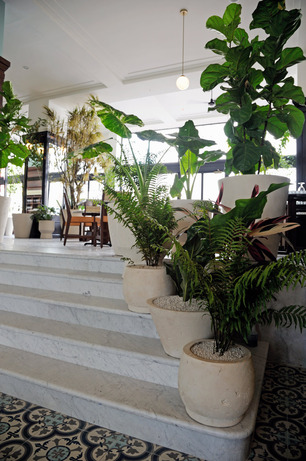
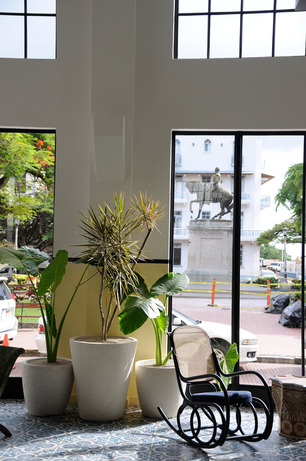
Hardin’s development philosophy is all about inclusion, which made partnering with the Ace (a relationship in the works for years) all the more natural. “We want to keep the diversity of this area alive and not drive out the people who have lived here their whole lives,” Hardin says. Owner of several properties and businesses in the neighborhood, Hardin employs rehabilitated gang members from the community around the Casco as housekeepers, bartenders and managers. “When a building is restored, people who have been around it their whole lives feel like its still a part of their community,” he adds. The American Trade is no different. Sitting on the town’s main square Plaza Herrera, the symbolism of the space is overwhelming; it sits at the crossroads of a neighborhood that sits at the crossroads of time alongside the world’s busiest shipping route where Central America connects North and South America. With such a mélange of factors and influences, it would take a wide swatch of creative talent to do the hotel justice.
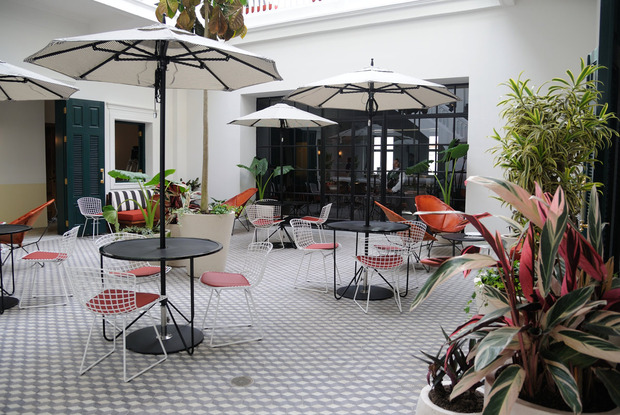
“In true Ace fashion, we took local influences and re-imagined them,” says Commune Design partner Roman Alonso. “The narrative we built was if the hotel was 400 years old and owned by the same family. Little by little each generation had taken it over and it was a marriage between different time periods and different cultures,” he continues. “And because Panama is about all of these cultures coming through constantly, it felt really right—it felt honest.” Mid-century modern touches are found in the furniture—for example, the timelessly stylish Bertoia side chairs from Knoll found in the lobby bar and courtyard. Still much of the hotel’s furniture relies on rich hardwoods and leathers, spanning modern styles like Jamey Garza‘s supple leather pieces that combine wire frames with supple leather. Much of the hotel’s furniture was created in Nicaragua from reclaimed hardwoods and designed in partnership with Commune and local artisans. “There is not a single veneer in this project; everything is hardwood,” says Alonso. Even the wooden floors have a story: All of the slats are handcrafted from sunken logs salvaged from the canal.

The general feel of the hotel is what Calderwood set out to accomplish. “Imagine one of those hotels from a Humphrey Bogart movie, where foreign correspondents are out in the field and the hotel is where they come back to, and have drinks,” Alonso explains. “It’s a home away from home.” With 50 rooms spread over the three floors above the expansive lobby, the hotel manages a confident flow of energy throughout. You never experience the void-like emptiness common in the Dubai-esque high-rises across town, yet there is enough space to feel at home. A courtyard, replete with handmade tiles and lush indigenous vegetation connects to a reading room reminiscent of Hemingway’s heyday. Meanwhile a pool deck gives a panoramic view of the Pacific, the Casco and the city’s skyline.

Throughout the hotel, nearly every room is a different size and layout due to the former usage of the building and the fact that the American Trade is actually four buildings integrated into one. This creates a sense of individuality to the comfortably adorned rooms that feature vintage two button light switches, bathroom doors from New York’s Plaza Hotel and toiletries from Australia’s Aesop. The hotel’s central location means every room has an interesting view; ours overlooking a centuries-old church and quaint colonial street where the residents’ living rooms open up onto the cobblestones.
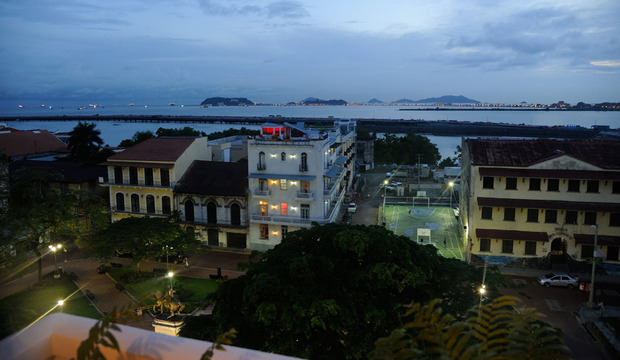
It is the fourth floor suites, however, that stand apart. Since the American Trade is the highest building in the area, its views are largely unobstructed. From the top floor suite, a balcony with bistro chairs is the perfect place to watch the sunset among ships docked at sea waiting for their turn to pass through the canal, Frank Gehry’s recently completed Biomuseo and the bustling, winding streets below. Clearly, getting lost in the moment is easy.
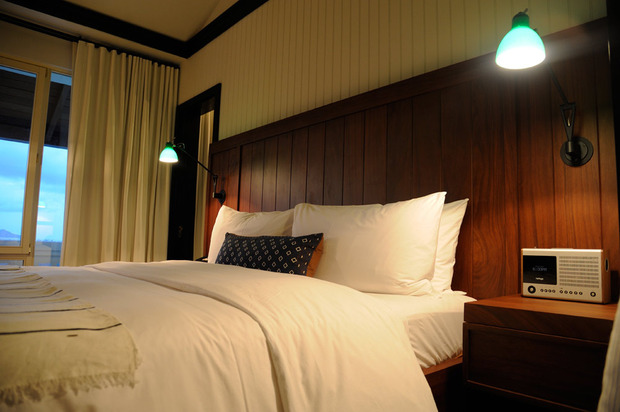
Our experience at the American Trade was unique as we were the first to open the doors, the first to swim in the pool and the first to appreciate the culmination of influences this sparkling property has to offer. However, the American Trade is the sort of property that will only improve with age. Like the fine leather of its furniture, the property will develop a patina as it ages along with its surroundings. Walking through the Casco with Vasquez, she points out the juxtaposition of various styles—American colonial, Spanish, French colonial and the dreaded “neofeo” (“new ugly” in Spanish)—all relics of the cultures and people that have shaped Panama’s culture. “We are a catalogue country,” she says. “We are always looking outward, looking at the contributions of other places, what is ‘Panamanian’ essentially is difficult to discern.” Vasquez raises this issue next to a townhouse that looks like it was pulled out of New Orleans and a crumbling Spanish colonial-era wall. However, we are at the crossroads: Divergent influences are welcome and it may just be that the American Trade Hotel—with its diverse creative influences and team—is, in fact, quintessentially Panamanian.
The American Trade is now open to the public and accepting reservations; to book a room, visit their website.
Photos by Hans Aschim
